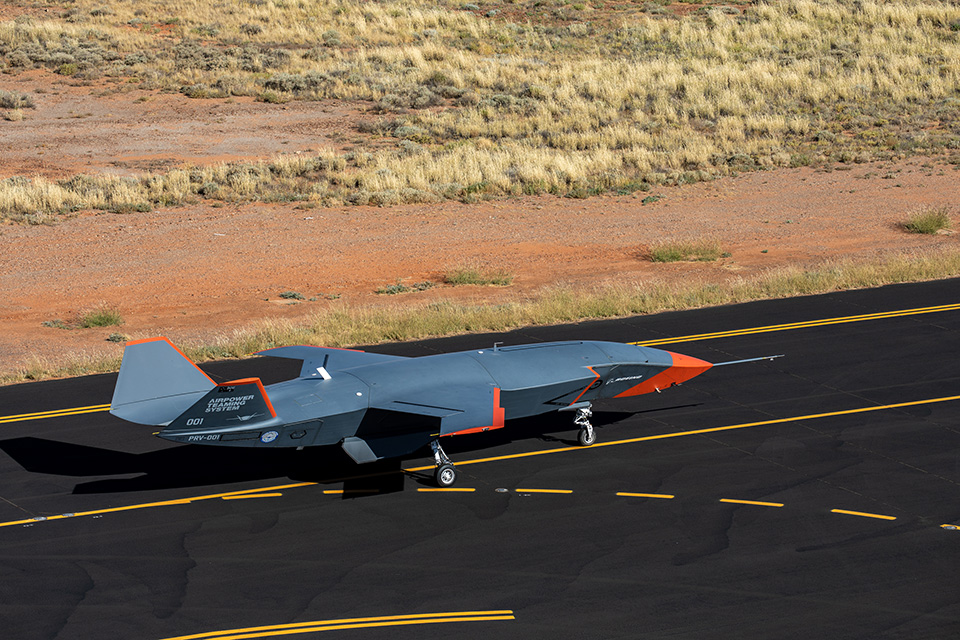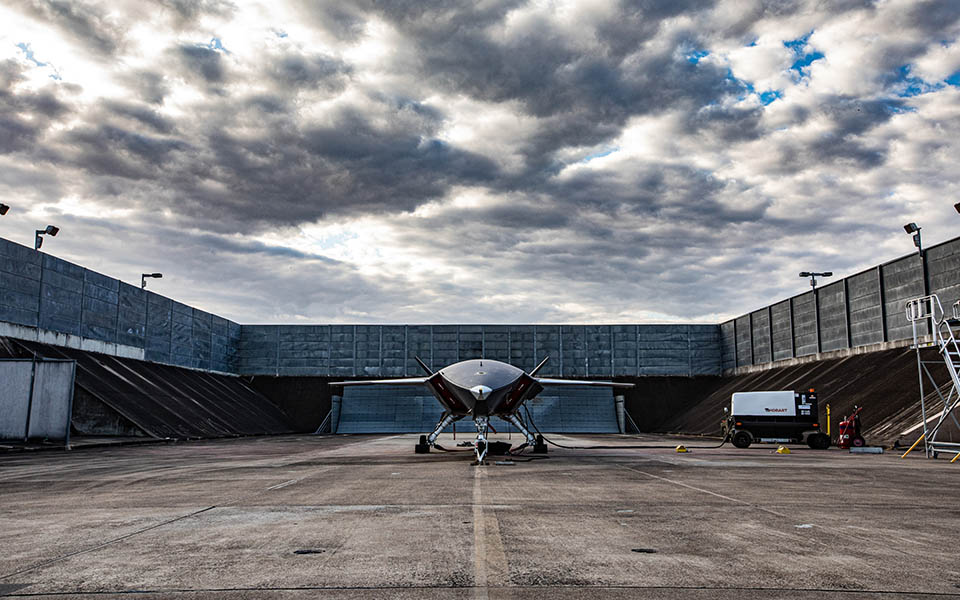The US Air Force is counting on two highly secretive unmanned aerial systems or drones to take on its arch-rival China in any future military conflict, according to a top Pentagon official.
Major military powers across the world are currently focusing on the development of sixth-generation fighter aircraft, which are expected to roll out in 2035-40. The next-generation aircraft will feature what is called the “system of systems”, which distinguishes them from previous generations of jet fighters.
These programs will include a manned combat platform that will work in harmony with a variety of unmanned combat aerial vehicles (UCAVs), many of which will have a high level of autonomy.
There is no doubt that the US is currently leading this race. Considering the US’ technological advantage, it is reasonable to expect that its program outcomes will influence future airpower scenarios.
In a recent statement, Air Force Secretary Frank Kendall told Politico that USAF will start looking for funds to develop a pair of classified drones that would serve alongside fighter jets and bombers.
He acknowledged that they’re both unmanned air combat vehicles, or unmanned platforms designed to fly alongside fighter jets such as the [Next Generation Air Dominance fighter], the F-22, or the F-35. On the other side, they can operate with bombers such as the B-21.

The projects’ existence will be publicly reported in the budget request, which will be sent to Congress early next year, but the contents will be kept secret, he said. The revelation is the clearest sign that the US is counting on autonomous weapons to provide it an advantage in the intensifying military rivalry with China.
Air Force Lt. Gen. Dave Deptula (retired), the former deputy chief of staff for intelligence, surveillance and reconnaissance, was quoted by Politico, as saying, “Investing in unique and highly capable unmanned aerial vehicles is something people not only expect but is indicative of the fact that the Air Force is exploiting the technologies out there to give it a decisive technology edge.”
Possible Options
One of the most possible options for the US is to commit itself to a “loyal wingman” program, which involves a drone that uses artificial intelligence to operate beside piloted aircraft and complete tasks that are too unsafe for fighter pilots.

The Air Force Life Cycle Management Center announced on August 16, 2021, that contracts worth a total of $20.2 million to Kratos and General Atomics for the development of the Autonomous Core System of the Skyborg unmanned aircraft control system will accelerate Skyborg toward becoming a program of record on time in 2023.
The research will aid in the integration of the Autonomous Core System (ACS) into the aircraft as well as large-scale testing. The goal is to begin a program of record in 2023.
Kendall declined to go into detail about the programs, but the fact that the new classified programs will work alongside fighters clearly suggests it’s the loyal wingman concept, according to Richard Aboulafia, vice president of analysis at the Teal Group, an aerospace market research organization.
Another possibility is that the new unmanned projects will coexist with the Next-Generation Air Dominance (NGAD) program and the B-21 bomber, both of which are officially classified.
The NGAD program will most likely consist of a family of fighter jets as well as unmanned aircraft. In the coming years, it will take the place of the F-22 stealth fighter. Many in the aerospace and military sector were startled when the Air Force’s fiscal 2022 budget request did not include funding for the loyal wingman idea.
The delay in commencing the programs could be due to some pondering about how such an aircraft could be used, possibly launching it from another aircraft, according to Aboulafia.
Another factor to take into account is that the US may partner with Australia and the UK, both of which are exploring similar initiatives. Boeing is leading the initiative in Australia, while Northrop Grumman has been chosen to lead the project in the United Kingdom.
Autonomous Drone Skyborg
Skyborg is an autonomous aircraft pairing framework that will allow the US Air Force to posture, create, and maintain mission sorties at a fast enough rate to produce and sustain combat mass in contested areas.
Military pilots obtain critical information about their environment, when partnered aircraft with integrated autonomy detect potential air and ground threats, estimate threat proximity, analyze imminent danger, and suggest acceptable choices for hitting or evading opposing aircraft.
Complex algorithms and cutting-edge sensors included in the partnered aircraft enable autonomy to make judgments depending on established rules of engagement set by manned teammates. Field tests will confirm the accuracy of the algorithms and that the system continues to operate within the restrictions set during mission preparation.
Human pilots will not be replaced by Skyborg. Instead, it will supply them with critical information to help them make quick, well-informed decisions.

The US Air Force successfully test-flew Skyborg, an unmanned aerial vehicle (UAV) that runs on an autonomous hardware/software package, for the first time earlier this year. The new aircraft demonstrated essential characteristics needed to classify its system operation as safe during its 130-minute test flight at Tyndall Air Force Base in Florida.
Skyborg was able to stay within predetermined “geo-fences,” respond to navigational commands and execute coordinated moves.
Boeing’s Loyal Wingman
In November, Boeing Australia tested two unmanned aircraft, expanding its Airpower Teaming System flight testing program. The Boeing Airpower Teaming System (BATS) consists of an unmanned aircraft that works with crewed aircraft on duties like intelligence, surveillance, and reconnaissance, as well as tactical early warning. Furthermore, the aircraft’s low cost allows operators to operate the aircraft on the front lines with greater confidence, reducing the risk of losing the asset in combat.
The teams obtained aircraft performance data throughout the flight-test missions, which will be used to guide and modify the Loyal Wingman’s digital twin, allowing the aircraft’s development to be accelerated.
The digital twin simulates the whole lifecycle of the system, from design to development to production and maintenance, and helps with speed and first-time quality.
- Contact the author at ashishmichel@gmail.com
- Follow EurAsian Times on Google News




